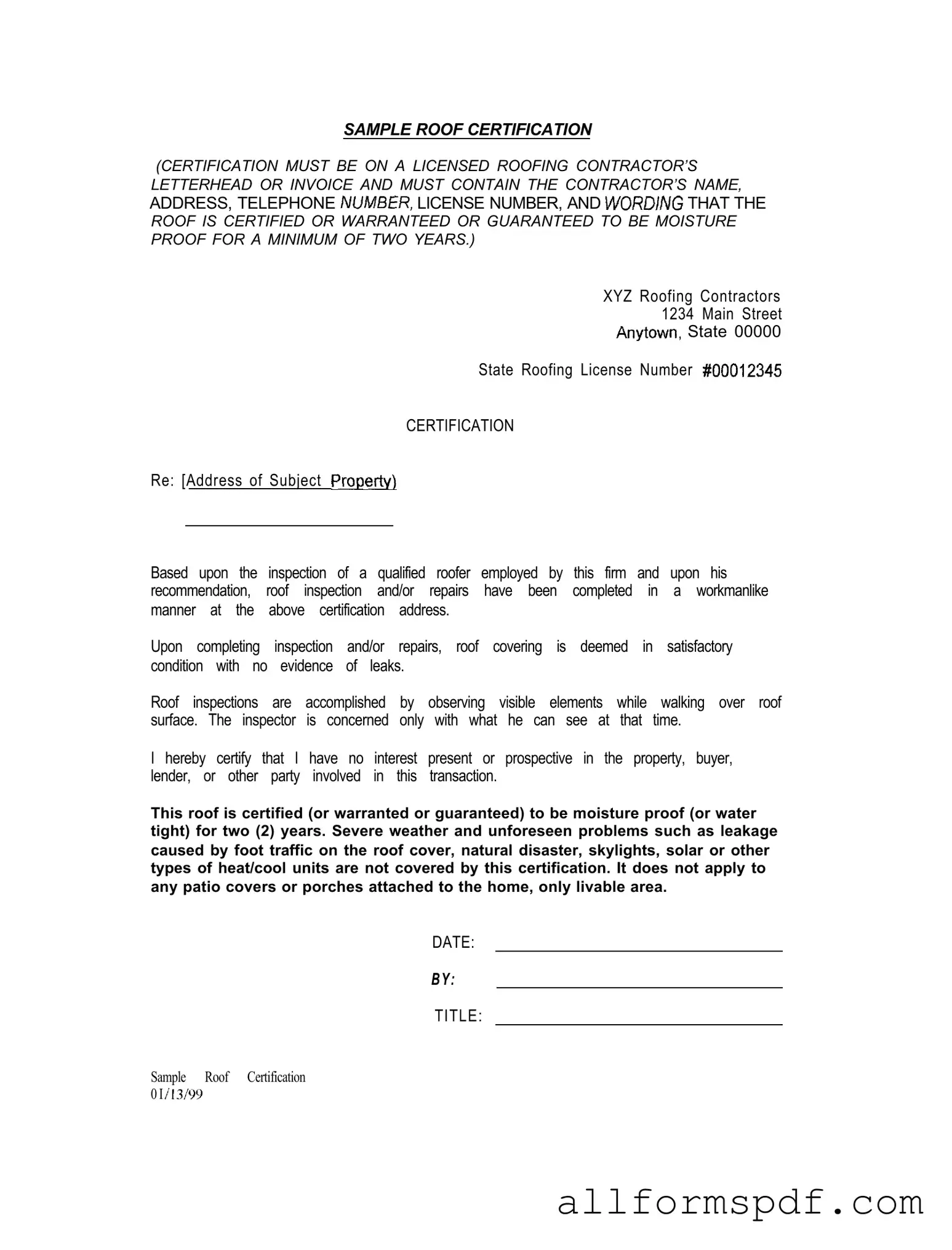Filling out the Sample Roof Certification form requires careful attention to detail. One common mistake is failing to use the proper letterhead. The certification must be on a licensed roofing contractor’s letterhead or invoice. Without this essential element, the form may be considered invalid.
Another frequent error is neglecting to include the contractor's contact information. The form must contain the contractor’s name, address, telephone number, and license number. Omitting any of these details can lead to confusion and hinder communication.
People often forget to specify the address of the subject property in the certification section. This information is crucial for identifying which property the certification pertains to. Without it, the certification may not hold any relevance.
In addition, some individuals mistakenly believe that a simple inspection is sufficient for certification. The form explicitly states that the inspection must be performed by a qualified roofer employed by the firm. This requirement ensures that the inspection is conducted professionally and accurately.
Another common oversight is the failure to include the necessary wording regarding the roof's condition. The certification must clearly state that the roof is certified, warranted, or guaranteed to be moisture-proof for a minimum of two years. If this language is missing, the certification loses its intended meaning.
Additionally, people sometimes overlook the limitations of the certification. The form specifies that severe weather and unforeseen problems are not covered. It is essential to understand and communicate these limitations to avoid misunderstandings later.
Lastly, the date and signature of the certifying individual are often left out. This information is critical as it validates the certification. Without a date and signature, the document may not be considered legally binding.
